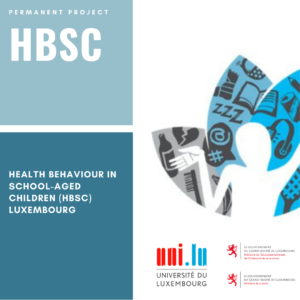Suicide is one of the leading causes of death among young people worldwide. In order to prevent suicides, early identification of groups at risk is needed. In the Luxembourgish HBSC study, data on suicidal behaviours among adolescents were collected in 2006, 2010 and 2014. These can be used to identify suicide risk factors and to develop comprehensive suicide prevention programs.
In Luxembourg, the suicide rate has fluctuated around 15 deaths per 100 000 inhabitants per year, for more than ten years. In the period 2006 – 2016, 20 deaths were registered as suicide in the age group of 10 to 19-year-olds. These suicides represent approximately 19% of all deaths registered in this age group.
In the Luxembourgish HBSC study conducted in 2014, 875 adolescents indicated to have contemplated suicide in the last 12 months, which amounts to 15.1% of the adolescents in the study. In the same year, 811 adolescents (14.0%) indicated to have made a suicide plan in the last 12 months, and 448 adolescents (7.7%) to have attempted suicide (at least once) in the last year.
In first instance, bivariate logistic regressions analyses were conducted for 24 independent variables with three suicidal behaviours (contemplation of suicide, planning of suicide and suicide attempt) and sadness as dependent variables in order to identify potential risk factors. These risk factors were further tested in multivariate logistic regressions, in order to make a statement about the relevance of these factors for suicidal behaviour of adolescents in Luxembourg, while taking into account the dependence between the risk factors.
Results from multivariate logistic regressions indicate that subjective health complaints are the most important risk factor for suicidal behaviour. Adolescents who have recurrent multiple health complaints are at higher risk for suicidal behaviour than adolescents who do not have health complaints. Life satisfaction is the second most important risk factor for suicidal behaviour. Adolescents with lower levels of life satisfaction are at higher risk for suicidal behaviour than adolescents who have higher levels of life satisfaction.
Gender-specific analyses show that the risk factors differ between girls and boys for suicidal behaviour.
Suicidal behaviour in youth in Luxembourg – Findings from the HBSC 2014 Luxembourg study
Proposition de citation
Catunda, C., van Duin, C., Heinz, A. & Willems, H. (2020). Suicidal behaviour in youth in Luxembourg – Findings from the HBSC 2014 Luxembourg study. HBSC Luxembourg suicide report. Esch-sur-Alzette. University of Luxembourg (UL); Ministère de l’Éducation nationale, de l’Enfance et de la Jeunesse (MENJE); Ministère de la Santé.



